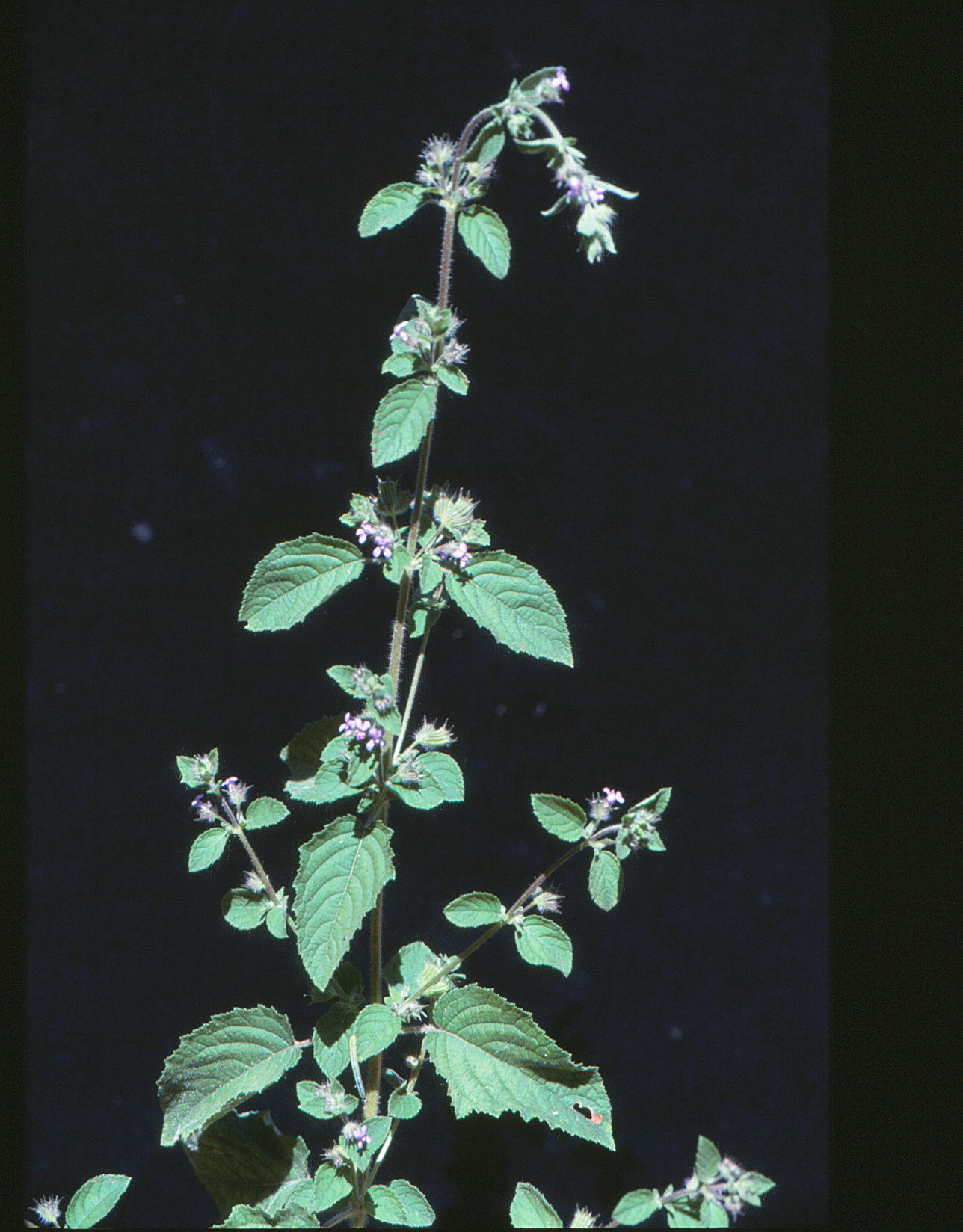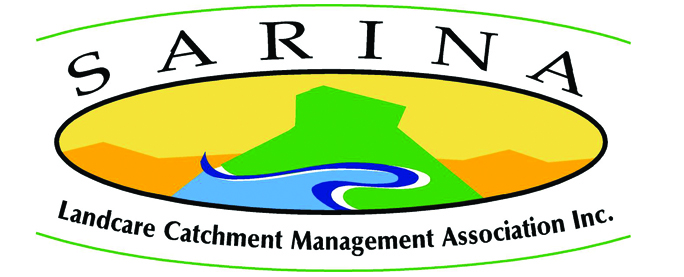Hyptis, horehound
Hyptis suaveolens, Fam. Lamiaceae

Erect annual strongly aromatic sub-shrub to 1.5m or more, with stiff woody based square stems; whole plant covered with glandular and non glandular hairs.
| Weed Category: |
Other invasive plants Invasive plants that are not prohibited or restricted invasive plants, but are known to spread readily and cause negative impacts, within the region.
|
| Weed: | Yes |
| Form or habit: | Shrub |
| Family: | Lamiaceae |
| Leaf: | Simple Opposite Opposite simple, ovate or triangular 20-100 x 15-60mm, pointed at the tip, base heart-shaped to rounded, margins bluntly toothed; upper leaves reduced in size. |
| Flower conspicuous: | Conspicuous |
| Flower colour: |
Blue, Purple |
| Flower description: | Small tubular unequally lipped, lavender-blue, borne in small axillary clusters along flowering branches. |
| Fruit conspicuous: | Conspicuous |
| Fruit colour: |
Brown |
| Fruit: | Dry |
| Fruit description: | Four shield-like dark brown nutlets, 3-3.5mm wide contained within each hairy capsule-like, ridged tubular 4-lipped calyx, 5-12mm long, with 5 stiff bristles around the mouth. |
| Habitat: | |
| Distribution | |
| Food source for: | |
| Toxicity: | No toxicity known |
| Origin: | Tropical America |
| Notes: | Spread by: seeds spread by vehicles and machinery, animals, in contaminated hay or pasture seed; ‘capsules’ float on water, adhere to ‘everything’. Invades/threats: floodplain margins, open forests, disturbed areas and overgrazed pastures. Forms dense thickets. Notes: primarily in coastal areas in this region. Large seedbanks develop in the soil leading to prolific germination. There are scattered records for two other similar weedy Hyptis spp: knobweed (H. capita) grows to 2.5m and has white flowers borne in globular heads on long stems in upper leaf axils. Comb hyptis (H. pectinata) grows to 4m and has clusters of white, pale blue or pinkish flowers borne along the stems of many-branched floral sprays. Environmental weed. |
| Information sources: | Mackay Regional Pest Management Group (2018) Weeds of the Mackay Whitsunday Region Second Edition. |



